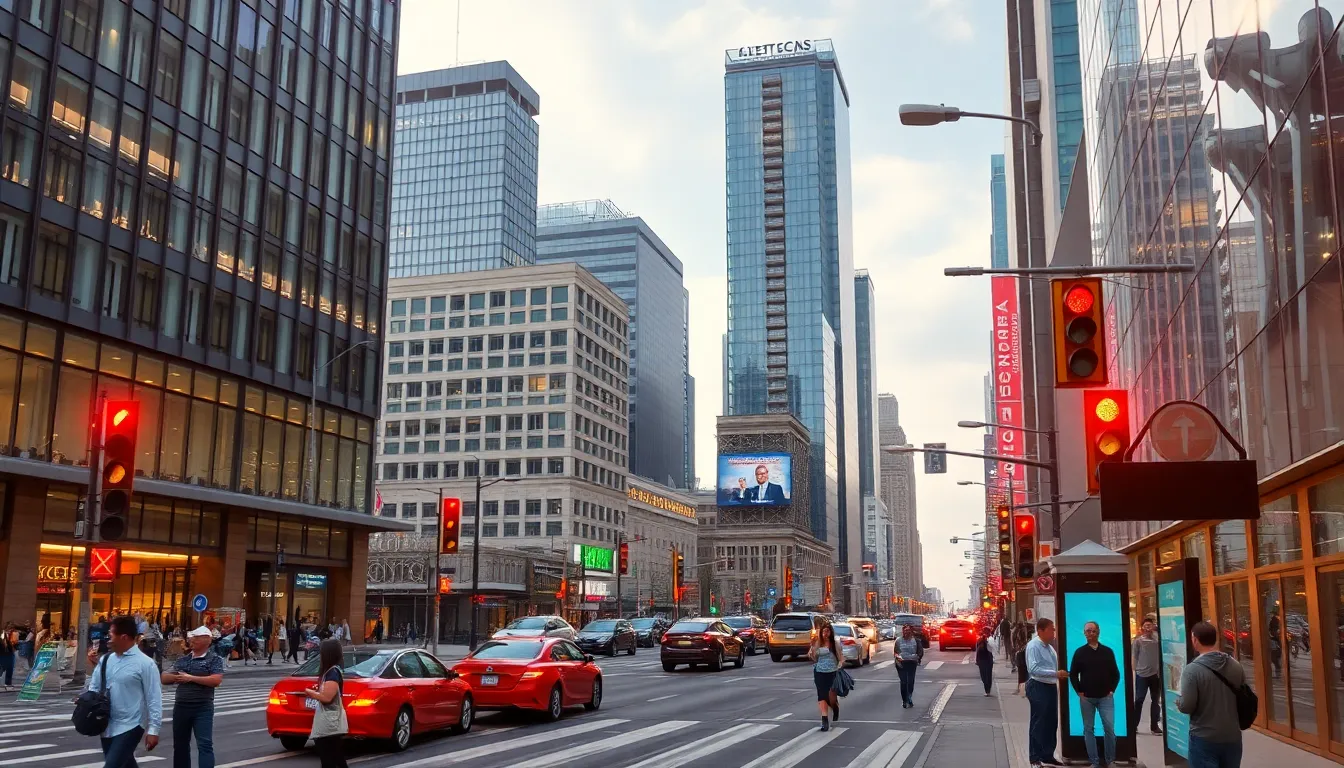As urban areas continue to grow, the concept of smart cities emerges as a beacon of innovation and efficiency. The Internet of Things (IoT) plays a crucial role in transforming traditional cities into interconnected hubs that enhance the quality of life for residents. By integrating smart technologies, cities can streamline services, improve sustainability, and foster community engagement.
Imagine a city where traffic flows smoothly, energy consumption is optimized, and public safety is enhanced through real-time data. IoT devices collect and analyze vast amounts of information, enabling city planners and officials to make informed decisions. This interconnected ecosystem not only addresses current challenges but also paves the way for a more resilient and adaptive urban future.
Table of Contents
ToggleOverview of IoT in Smart Cities
IoT in smart cities involves the integration of connected devices and technology to enhance urban living. These systems enable efficient management of various city functions, from transportation to energy use.
Definition and Scope
IoT refers to interconnected devices that collect and exchange data through the internet. In smart cities, IoT encompasses a wide range of applications, including smart lighting, waste management systems, and transportation networks. The connected infrastructure allows for real-time data collection and analysis, facilitating informed decision-making.
Importance of IoT in Urban Development
IoT plays a critical role in urban development by improving overall efficiency and sustainability. By leveraging real-time data, cities can optimize resources, reduce operational costs, and enhance service delivery. Enhanced public safety measures, such as surveillance and emergency response systems, also stem from effective IoT integration. Furthermore, IoT fosters community engagement by providing residents with access to data and platforms for participation in local governance.
Key Components of IoT in Smart Cities

Key components of IoT in smart cities enable efficient urban management and improved quality of life. These components consist of advanced technologies that facilitate data collection, analysis, and communication.
Sensors and Devices
Sensors and devices form the backbone of IoT in smart cities. They gather real-time data on various parameters like air quality, traffic patterns, and energy consumption. For instance, environmental sensors monitor pollution levels and provide valuable insights for policy-making. Smart meters track energy and water usage, enhancing resource management. Traffic sensors collect data on congestion, assisting in effective transportation planning. These devices operate autonomously, relaying actionable information that helps city planners and authorities make informed decisions.
Connectivity Solutions
Connectivity solutions link the myriad devices in a smart city ecosystem. Reliable communication networks such as 5G, LPWAN (Low Power Wide Area Network), and Wi-Fi ensure seamless data exchange. 5G offers high-speed connectivity and low latency, vital for applications like autonomous vehicles and real-time traffic monitoring. LPWAN supports devices with low power consumption, ideal for sensors scattered across vast urban areas. Robust connectivity fosters collaboration among various city departments, allowing for integrated services that enhance public safety, reduce operational costs, and optimize resource allocation.
Benefits of Implementing IoT in Smart Cities
Implementing IoT in smart cities yields numerous advantages that significantly enhance urban living. Key benefits include improved resource management and heightened public safety and security.
Improved Efficiency in Resource Management
Enhanced efficiency in resource management plays a vital role in smart cities. IoT sensors monitor and control utilities like water, electricity, and gas, minimizing waste and ensuring optimal usage. Automated systems, such as smart grids, adjust energy distribution based on demand, resulting in reduced energy costs for residents and businesses. Real-time data collection enables city planners to identify patterns in resource consumption, facilitating informed decisions on infrastructure investment and maintenance. For example, smart waste management systems optimize collection routes and schedules based on fill levels, lowering operational costs and environmental impact.
Enhanced Public Safety and Security
IoT significantly boosts public safety and security in smart cities. Surveillance cameras equipped with advanced analytics detect anomalies and alert authorities in real-time, allowing for swift responses to incidents. Smart gunshot detection systems pinpoint firearm discharge locations, enabling faster police deployment. Moreover, connected emergency response systems streamline communication between citizens and emergency services, enhancing their ability to address crises. IoT also supports disaster management through early warning systems that provide real-time alerts for natural disasters, allowing residents to take preventive measures.
Challenges and Considerations
The integration of IoT in smart cities brings several challenges that must be addressed for successful implementation. Key areas of concern include data privacy, security risks, and infrastructure scalability issues.
Data Privacy and Security Risks
Data privacy and security risks present significant challenges in smart cities. The vast amounts of data collected by IoT devices often contain sensitive information about individuals’ behaviors and locations. Unauthorized access to this data can result in personal information being compromised. Furthermore, cyberattacks on connected systems can disrupt critical services, such as emergency response and traffic management. Implementing robust security measures, including encryption and regular software updates, is essential to protect data and maintain public trust in smart city initiatives.
Infrastructure and Scalability Issues
Infrastructure and scalability pose additional challenges in deploying IoT in smart cities. Many existing urban infrastructures lack the necessary technology to support advanced IoT systems, necessitating substantial investments in upgrades and maintenance. Additionally, scaling IoT solutions to accommodate growing populations and evolving technologies requires careful planning and resource allocation. City planners must develop adaptable infrastructures that can support the influx of devices and integrate seamlessly with existing systems, ensuring reliable performance as demand increases.
Future Trends in IoT for Smart Cities
IoT’s role in smart cities continues to evolve, bringing forward innovative trends that enhance urban living. Key areas of focus include the integration of artificial intelligence (AI) and machine learning, along with the development of sustainable urban solutions.
Integration of AI and Machine Learning
AI and machine learning enhance IoT systems, enabling real-time decision-making and predictive analytics. Automated data processing allows cities to anticipate traffic congestion with intelligent transportation systems, adjusting traffic signals based on real-time conditions. Smart cameras can analyze footage to identify suspicious activities, improving public safety. Predictive maintenance powered by AI assesses the health of infrastructure, reducing failures by scheduling maintenance proactively. Combined, these technologies create adaptive systems that respond proactively to urban challenges, optimizing resource use and enhancing the quality of life for residents.
Sustainable Urban Solutions
Sustainability stands as a core principle of future smart cities. IoT supports sustainable urban solutions by monitoring energy use and optimizing resources. Smart grids can analyze energy consumption patterns and adjust distribution accordingly, reducing waste. Waste management systems utilize IoT sensors to optimize collection routes, decreasing fuel consumption and emissions. Green buildings equipped with IoT devices monitor indoor environments, enhancing energy efficiency and air quality. As cities adopt these solutions, they contribute to environmental goals, fostering healthier and more livable communities.
The integration of IoT in smart cities is reshaping urban living by enhancing efficiency and security. As cities adopt connected technologies, they unlock new possibilities for resource management and public safety. The real-time data collected through IoT devices empowers city planners to make informed decisions that benefit residents.
While challenges like data privacy and infrastructure upgrades exist, the potential for improved quality of life remains significant. Future advancements in AI and sustainability will further drive the evolution of smart cities. Embracing these innovations will pave the way for more resilient and adaptive urban environments that prioritize community engagement and environmental responsibility.



